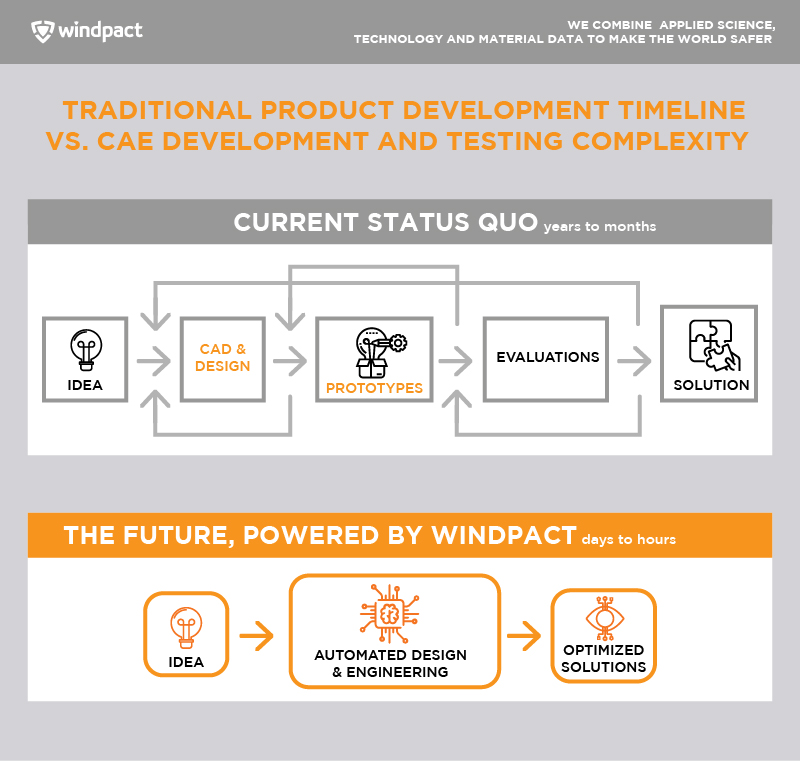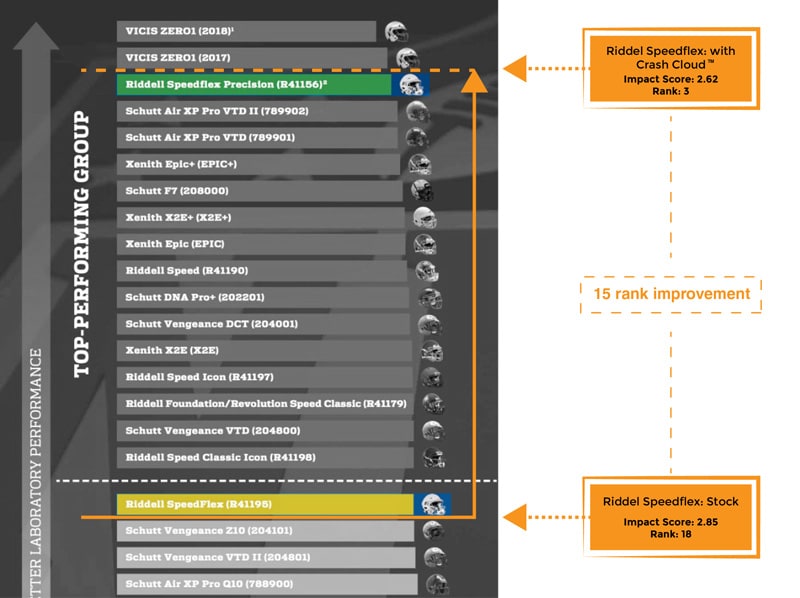Computer-Aided Engineering (CAE): Creating Safer Products Through Computational Methods
Computational methods for modeling the natural world are now standard for most equipment design companies. As the cost of computer models is demonstrably lesser than that for physical prototyping design and testing, more groups are looking towards CAE (computer-aided engineering) as a solution for modeling specific physical phenomena. CAE methods are effective for replicating complex physics. You may be familiar with the various kinds of design and engineering aspects that CAE captures, such as computer-aided design (CAD), computer-aided manufacturing (CAM), finite element analysis (FEA), and many more.
Rigorous testing is critical where safety is concerned, and also when attesting to a product’s capability to your clients. For instance, it is one thing to claim that your piece of equipment outperforms other models, but the exact means by which you measure that claim need to be cost-effective, accurate, and representative of your CAE model’s real capabilities when translated into a product.
The end result of companies that do not verify their helmet performance’s specs through testing are well-known, but the recent controversy surrounding Trek Bicycle’s claims of their WaveCel helmet’s capabilities is a reminder that testing through reliable means is important on all fronts.
Windpact believes that CAE is a pivotal part of the testing process, and understanding why it works is just as important. Today, we will be discussing:
- General overview of CAE’s theory and applications
- How CAE applies to helmet safety, specifically
- Why CAE is important for establishing reliability
- Windpact’s own commitment to using CAE as part of our mission towards better equipment
Computer-aided engineering for Modeling
Computer-aided engineering (CAE) is the umbrella term that captures engineering techniques that are performed computationally such as CAD, FEA, and CAM. However, while individual components of CAE are powerful tools on their own, oftentimes a product pipeline uses many types of them throughout product design and development. CAE covers the entire product development process, improving efficiency. It can be used to simulate a product’s performance in specified testing conditions; for example, if you wanted to test the unit-wise reliability of a potential product’s individual elements, you would model the unit through finite element analysis (FEA). Or, if you wanted to model the aerodynamic performance of an automobile’s design, you would use something akin to computational fluid dynamics (CFD). In academic research, even more complex methods called multi-physics models, which are a combination of FEA and CFD, are used.
CAE is particularly useful for:
- Reducing cost: computational models are cheaper investments over the long term despite being more expensive initially.
- Saving time: CAE models are quicker to use and evaluate expansive data.
- Equivalent reliability power: empirically-validated CAE models accurately represent the world around us, meaning the conclusions drawn from them are just as powerful.
The pros of CAE are attractive, and when used to draw conclusions about performance, are accurate. When we model very specific physical events like impacts on helmets, a variety of conditions and outcomes can be rapidly tested and verified.
Upfront investment
The initial costs of CAE programs sometimes put off teams that may be hesitant to invest in software and its associated tech. For example, the costs associated with CAD are calculated between $5,000 – $30,000 (based on what kind of software it is, what capabilities it has, and what features designers prefer having), and that price tag can easily turn groups away from adopting them.
Upfront costs of CAE usually include some combination of:
- Software: this is the initial investment right off that bat, but the cost of software is only a part of the process towards adopting a CAE pipeline.
- Training: the time lost training personnel on using the software can detract from the hours allocated for productivity. Beyond that, training packages are often not included in a software package.
- Hardware: running CAE programs often requires machines that can handle the added computational power, especially if a large group of engineers are operating on the same machine grid.
However, do not let these initial costs detract from the bigger picture, that being the massive savings on long term costs when teams adopt CAE. For instance, yes the early costs of starting FEA and investing in its IT infrastructure are significant, but think about it: FEA models take on average 6 months to complete, but once finished, the design and materials iterations shaves months, potentially even years off of the product development time. This translates into increasing returns on investment like time saved, costs reduced, and speed of prototyping.

Why is computer-aided engineering important in helmet safety?
Many who are unfamiliar with CAE models may be hesitant to accept the results of the data they generate. They may be tempted to reject the results of a model’s simulation out of sheer disbelief that computational models are comparable to physical testing. However, nothing could be further from the truth.
In tests comparing the results of both physical and CAE simulations, finite element analysis (FEA) correctly predicted material properties trends of new materials in existing helmets, optimizing performance in a manner comparable to creating multiple new physical models. In addition, assuming you use the proper methods to collect material data, computational modeling can remove the risk of outliers in physical testing. In physical testing, it is possible that there was a human error in assembly or manufacturing that cannot be caught until after exhaustive data analysis. The key takeaway from this is that CAE paradigms are not only useful for designing and predicting new models, but also for optimizing models that already exist in a way that is iterative and cost-effective.
Which brings us back to the problem with Trek Bicycle’s claims. Had their group completed exhaustive physical testing that truly captured the performance of their equipment from numerous parameters, they would have been fine. However, the costs related to this kind of testing adds up, and it adds up fast. Had they invested in a more robust pipeline based upon CAE methods, and started testing from there, the resulting issues could have been avoided all while saving on future cost.
How can computer-aided engineering be used to establish reliability?
As early as the 1980’s, the use of computerized solutions for modeling performance was championed by engineers who sought to reduce design mistakes. By using computation to either substitute or augment physical modeling, the reliability of a model’s true capabilities are made more concrete, at a fraction of the cost in the long term.
The breadth of testing and possibilities of conclusions drawn from CAE models are near-endless. This idea is especially important for not only optimization, but also for establishing reliability of new and existing equipment. The exact variables that determine reliability can be more easily tested in CAE than in physical testing of a model. This is because with FEA, manipulating materials on small scales is near-instant. For example, in tests of motorcycle helmets, FEA models of each helmet’s mechanical behavior during impact revealed helmet shells with lower shear performed better in crash tests than those with higher. To be able to draw such deterministic conclusions about a single variable is one of the great properties of CAE over other methods.
As CAE becomes even more advanced, the speed at which groups can model, optimize, and implement changes to both new and existing designs will only increase.
Windpact’s commitment to excellence in safety
Windpact chooses to lead by example in implementing CAE solutions to create better equipment. Even our premier design, Crash Cloud, is a product of this iterative process that is driven by data.

Beyond the Crash Cloud, more recently, our CAE-centric pipeline produced demonstrable gains in safety for existing helmet units used by the National Football League (NFL). The iterative power of FEA allowed us to take advantage of the breadth of scenarios and possibilities and apply this to helmets that are already on the market. Our testing revealed areas of improvement in a Ridell Speedflex helmet model that took it from rank 18 for safety up to rank 3. The ability to look holistically at the data collected from a model allowed for easy identification of the overall performance when various iterations were introduced. All this was done in a short period of time, a testament to the improvements in speed, cost and labor.
Windpact’s use of CAE methods is part of our constant drive to generate solutions and optimize by taking advantage of the many doors opened by computational engineering. As more possibilities arise from using CAE methods, we can model multiple metrics at once, from the very specific single parameters, to the wide variety of modifications and permutations needed in the product design pipeline. As these techniques are more encompassing, their ability to supplement traditional physical, real-world testing is particularly powerful and flexible.
FEA models and similar computational methods are only some of the valuable tools investigators and engineers have at their disposal within the auspices of CAE. Agile and flexible, CAE methods are quickly becoming the gold standard for improving safety, reducing injury, and creating better products.
